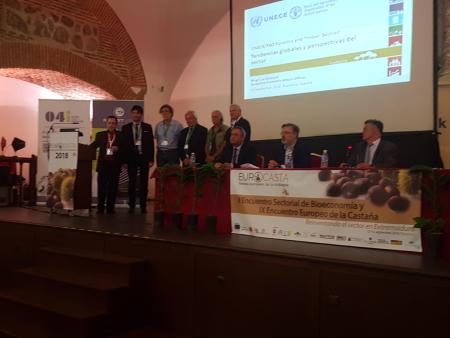
Objective:
Eurocastanea is the consultation and representation body for professionals in the chestnut sector in the countries of the European Union, and in the European and world economy.
In addition, it
- Organizes dialogue, consultation, study and joint action among its members, representing the chestnut sector to European or other institutions.
- Contributes to the regeneration and promotion of the sector, organising the European "Eurocastanea" days and cooperation missions in the technical, scientific or economic area.
Context:
In Europe, the chestnut occupies an area of approximately 2 million hectares, of which 300,000 are for agroforestry, with 90,000 producers and a production of 212,000 t.
However, in recent years the chestnut has been suffering from biotic problems such as pests and diseases and social problems or changes such as wildfires and the abandonment of chestnut growing, which has led to a significant decline of production in Europe.
Aware of this situation, in 2018 several organizations constituted the European network on chestnut Eurocastanea.
Contacts:
Roberto Rubio Gutiérrez, Roberto.Rubio@cesefor.com, http://www.cesefor.com
Further information:
Technical secretary ASSEMBLY OF EUROPEAN HORTICULTURAL REGIONS communication@areflh.org
Coordination committee member of Eurocastanea, José Laranjo: jlaranjo@utad.pt